Why the Hubble Space Telescope has been such a stellar success
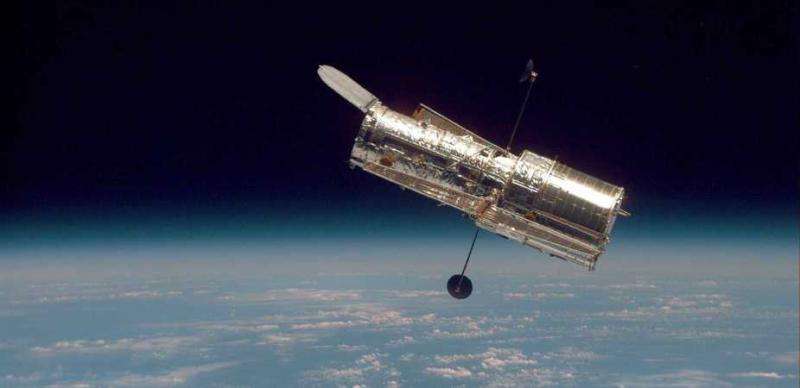
When the Hubble Space Telescope was launched back in April 1990 the World Wide Web was just months old and iPads only existed on Star Trek.
At first glance, Hubble is from a different technological era, and yet it continues to produce dazzling science and has global recognition. Indeed, when Hubble appears in the opening scenes of Gravity, the film's audience needs no explanation.
Why has Hubble been so successful for so long? How does it continue to make amazing discoveries, that capture our imagination, after decades in space?
Renewal
Hubble has been in space for 25 years, but in many ways is far younger. Space shuttle crews have serviced Hubble five times between 1993 and 2009, replacing old equipment and making repairs.
Hubble's mission started with embarrassment, when it was launched with a mirror that was the wrong shape. The error was only 0.002 millimetres, which may seem tiny, but is large for precision optics.
Fortunately, the mirror's defects were well understood, so lenses were made to correct Hubble's near-sightedness. Spacewalking astronauts installed these lenses into Hubble during the first Hubble servicing mission in 1993.
Astronauts have also replaced jittery solar arrays and failing gyroscopes. Old detectors have been replaced with more modern instruments.
Other equipment has been brought back to life, with spacewalking astronauts replacing defective electronics and installing upgrades. Such work is no mean feat in bulky pressurised spacesuits, and the Hubble servicing missions are one of the triumphs of crewed spaceflight.
Without these servicing missions, Hubble would never have produced spectacular science. Even if the mirror had been perfect, instruments would have become obsolete and the gyroscopes (essential for orienting Hubble) would have failed.
Since the retirement of the shuttles, Hubble can no longer be serviced. It may function for many years yet, but it will someday fail and eventually meet its end in a fiery re-entry.
A clear view from space
On a clear night in the countryside, you may imagine you have an unhindered view of the universe. But even on the clearest of nights, starlight is being absorbed and scattered by our atmosphere. Our atmosphere makes stars twinkle and scatters blue sunlight so effectively that the entire daytime sky is blue.
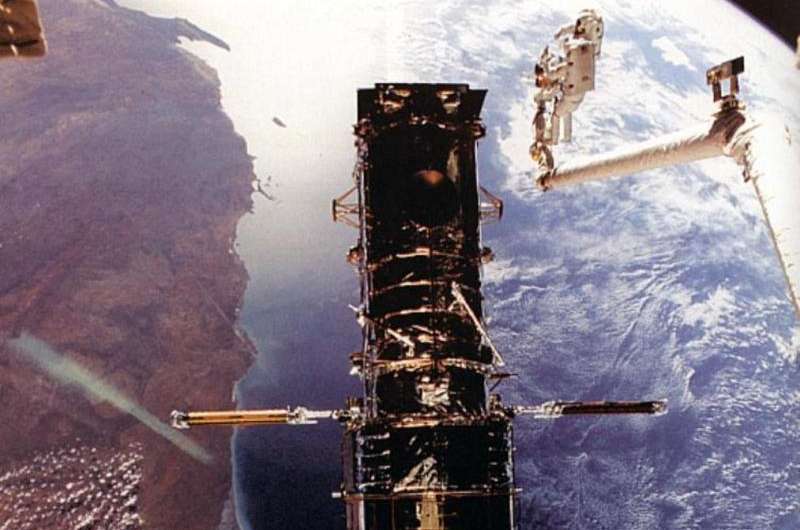
Unlike Hubble, telescopes on Earth must peer through our turbulent atmosphere, which blurs images. Centuries ago, Isaac Newton realised the atmosphere hinders the ability of telescopes to see resolve details, and he suggested a solution:
The only Remedy is a most serene and quiet Air, such as may perhaps be found on the tops of the highest Mountains above the grosser Clouds.
While astronomers do place telescopes atop of high mountains, the ultimate solution is a telescope in space. In space, the clarity of Hubble's images (defined by angular resolution) is limited by the size of its 2.4 metre mirror rather than atmospheric turbulence. From this vantage point, in visible light Hubble can see details roughly 25 times smaller than most Earth-bound telescopes.
Being in space gives Hubble incredible advantages compared to Earth-bound telescopes. But Hubble isn't meaningfully closer to the stars than us. It's just 540 kilometres above the Earth, which is nothing compared to astronomical distances. Indeed, it's so close you can sometimes spot Hubble speeding by.
In the 1990s, a team of astronomers, led by Wendy Freedman, Rob Kennicutt and Jeremy Mould, exploited the clarity of Hubble's images to find the bright variable stars in galaxies millions of light years from Earth. With these stars, astronomers measured the distances to these galaxies, which enabled the first precision measurement of the expansion rate of the Universe.
The detail of Hubble's images has been crucial to its ongoing success. It has enabled astronomers to view changing weather and aurora on other planets, measure the gravitational deflection of light by dark matter, peer into stellar nurseries and glimpse planets orbiting other stars.
Innovations
For the past two decades astronomers have been discovering planets orbiting distant stars. Some of these planets transit, passing between their stars and us, so they block a tiny percentage of the starlight that we would otherwise see. Transits that cause stars to dim by 1% are regularly detected by ground-based telescopes.
A far greater challenge is detecting the almost imperceptible additional dimming during a transit caused by light being blocked by particular elements and molecules in a planet's atmosphere. This requires measuring a 0.01% change in brightness. A perfect job for Hubble in the vacuum of space.
In 2000, David Charbonneau, Tim Brown and their colleagues used Hubble to detect sodium in the atmosphere of a planet orbiting the star HD 209458.
This is incredibly innovative science, that was not imagined by Hubble's designers four decades ago, when the only known planets were in our own solar system. Astronomers finding new ways to exploit Hubble's unique advantages is a key reason for Hubble's continuing success.
Light and dark
When we look at night sky, we are only seeing a small portion of the spectrum of light. Ultraviolet and infrared light is invisible to our eyes. But even if we could see ultraviolet light, it is largely blocked by the ozone layer.
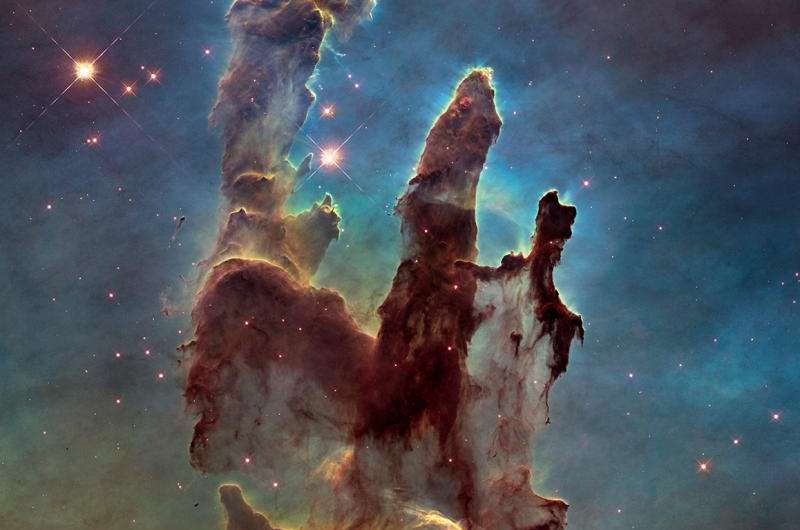
Furthermore, when we look up at the stars, we don't just see the starlight. We can see dark trees silhouetted against the night sky. The air literally glows, and it is particularly bright in infrared light.
From its vantage point in space, Hubble can see a broad spectrum of light against an exceptionally dark sky. This allows it to see further than Earth-bound telescopes.
In late 1995, Hubble's director Bob Williams used Hubble to stare at one region of space for ten consecutive days. The images of the "Hubble Deep Field" revealed thousands of galaxies, some of which are 12 billion light years from Earth.
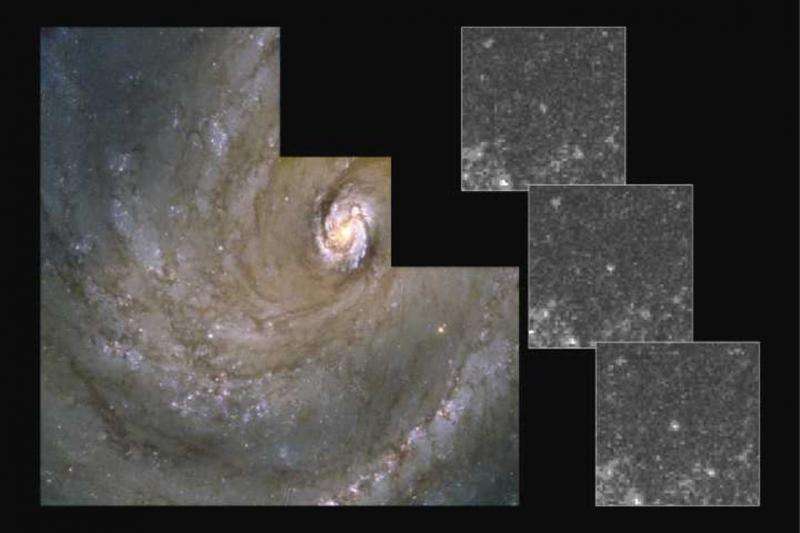
With improved instrumentation, Hubble has been able to stare even further into space, seeing galaxies 13.3 billion light years from Earth. This means the light took 97% of the age of the Universe to travel from these galaxies to Hubble. We are also seeing these galaxies when the Universe was 3% of its current age.
Hubble's successor, the James Webb Space Telescope, will peer further into space and back in time, viewing the creation of the first stars and galaxies.
-
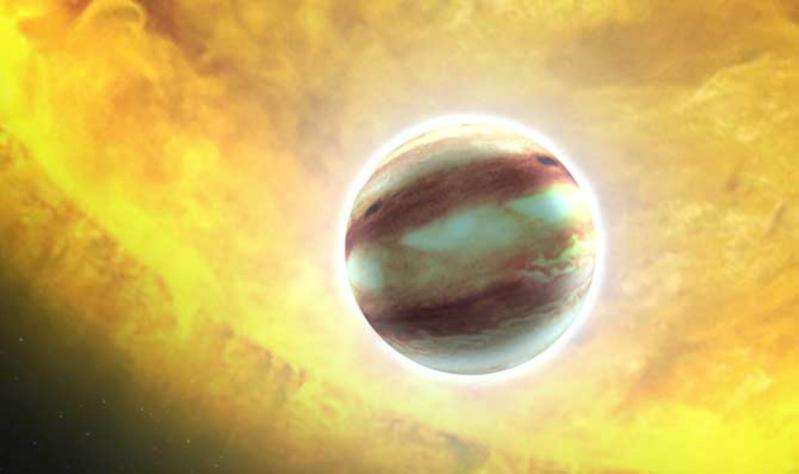
Hubble has detected the atmospheres of worlds circling distant stars. Credit: NASA; ESA; G. Bacon, STScI -
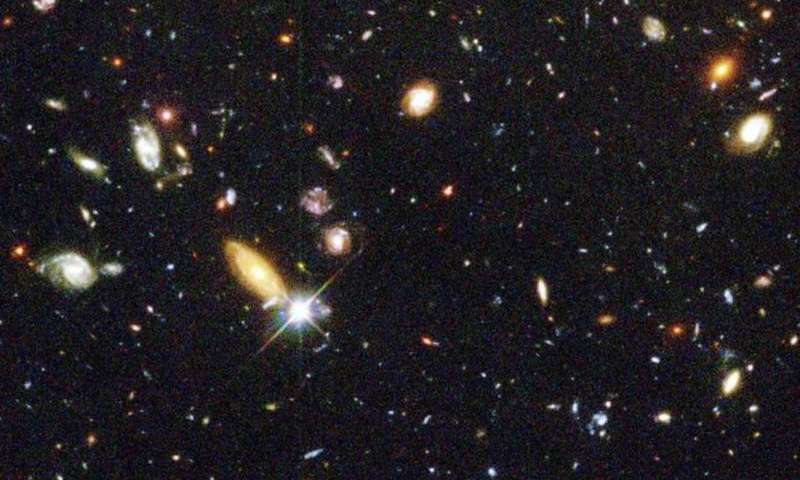
There are only two stars visible in this image. The rest are galaxies. Robert Williams and the Hubble Deep Field Team (STScI) and NASA
Source: The Conversation
This story is published courtesy of The Conversation (under Creative Commons-Attribution/No derivatives).
![]()





















